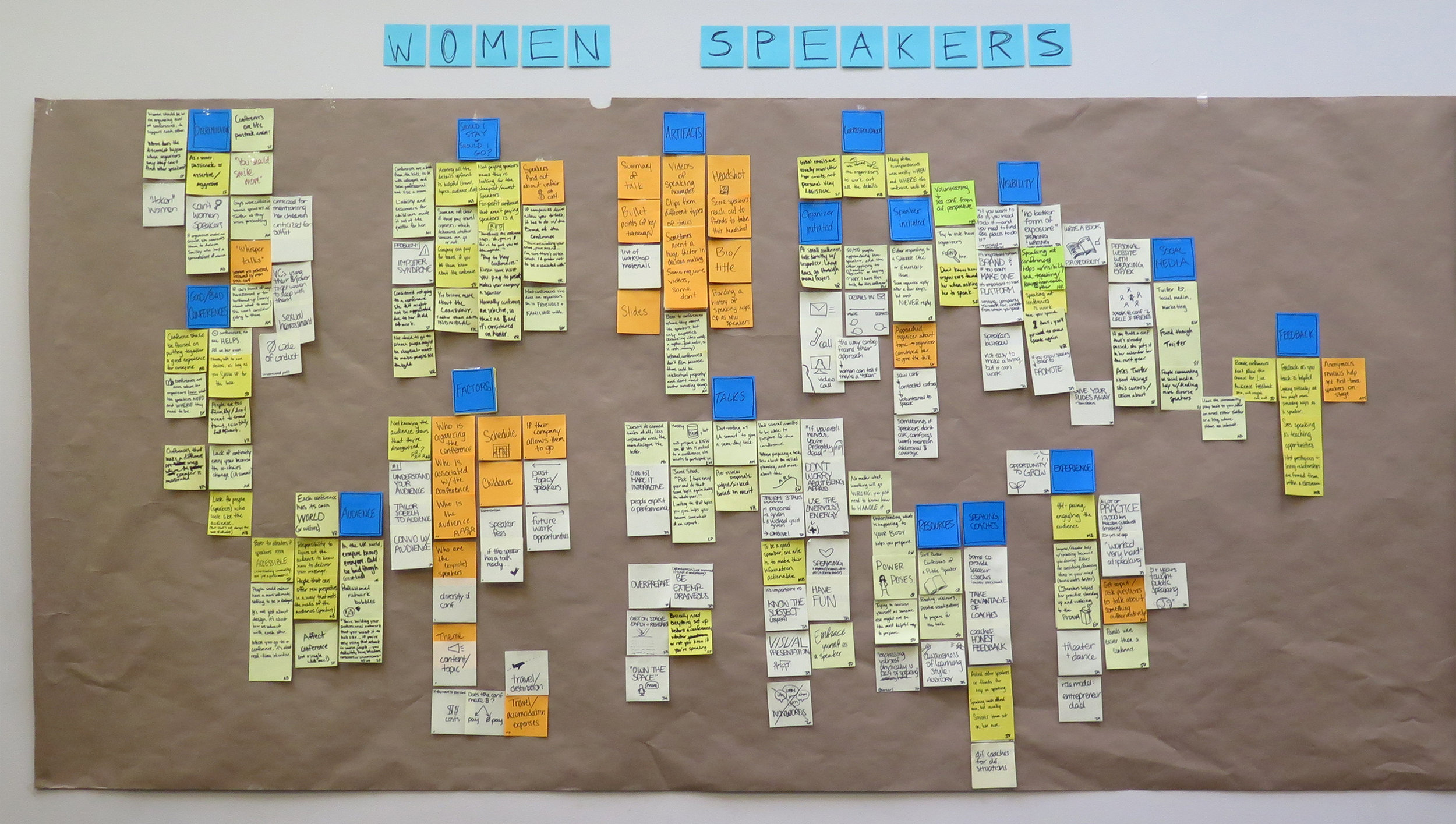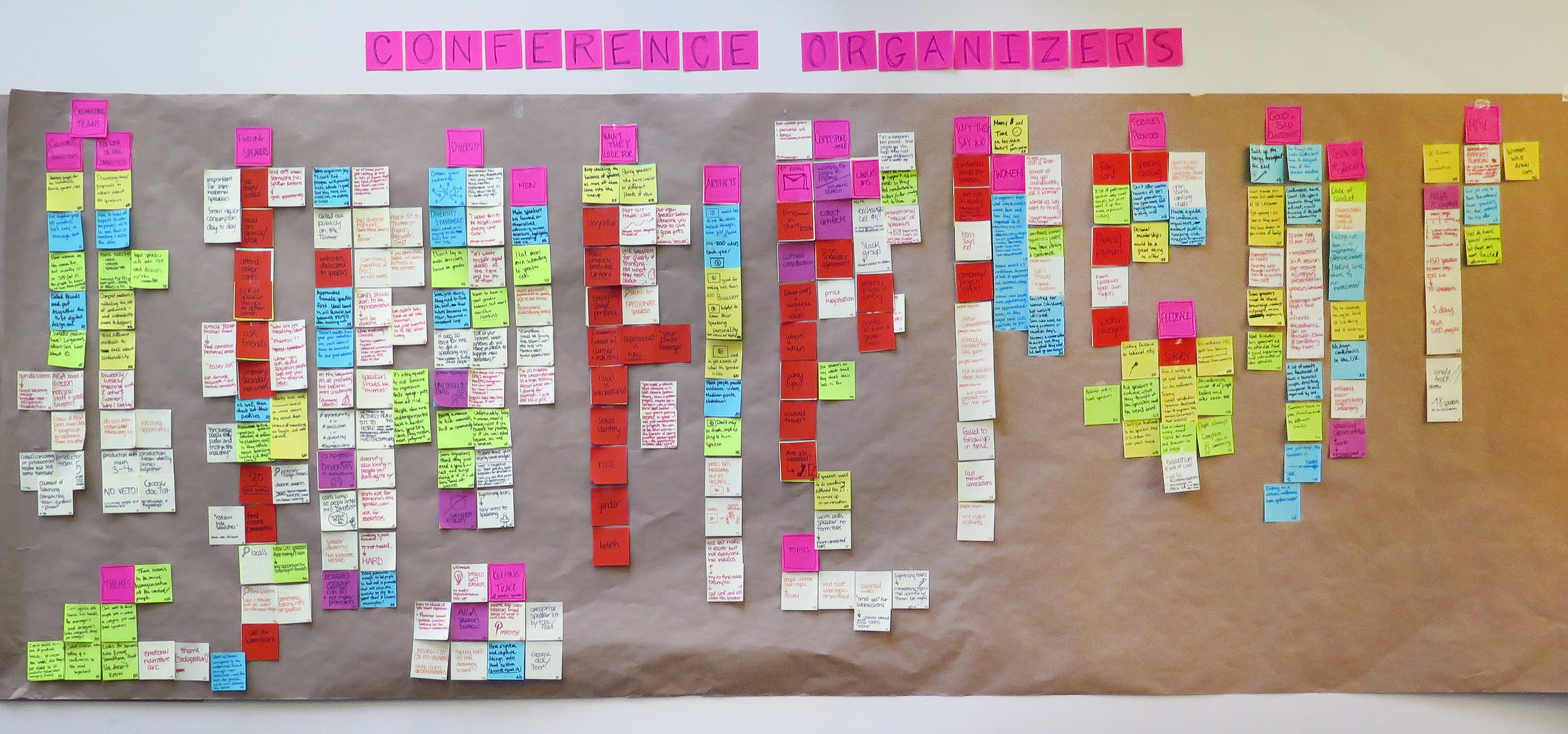Project overview
The main goal of the project was to redesign womentalkdesign.com to make it easier for conference organizers to find women speakers.
Through some enthusiastic community support, we had the chance to turn it into an organization that now provides resources, tools, and training events for both organizers and speakers.
My roles
Research, synthesis, information architecture, content strategy, systems design, visual design
Duration
June 2017 - Aug. 2017
Old to new design
Before redesign
After redesign
Background
This project started in 2013 when Christina Wodtke was getting tired of hearing conference organizers say “There aren’t enough women at events because [insert excuse here]”. She started working on Women Talk Design as a side project to make it easier for organizers to find women speakers and contact them so there would be no room for excuses.
In May 2017, over 160 people donated $21k to Christina’s GoFundMe campaign to support two design interns — myself, and my colleague Melissa. We were extremely lucky to have some amazing mentors from the field, including Indi Young, Abby Covert, Margot Bloomstein, Madonnalisa Chan, Hugh Dubberly, and Erin Malone. With their guidance, we were able to redesign Women Talk Design to be a great resource for women speakers and conference organizers.
Research and synthesis
RESEARCH
We started with brief screeners to find women speakers who have participated in conferences and to know what criteria conference organizers look for.
After receiving some responses, we conducted our research by having 30 minute to 2 hour conversations with 9 women speakers and 12 organizers (6 women, 6 men). It was a little challenging in the beginning because we didn’t create a thorough interview script — we simply had a handful of questions to keep the conversation going. Through Indi Young’s suggestion, we let the speakers and organizers drive the story while we practiced being comfortable with silences.
AFFINITY MAPPING
At the end of our research, we had some great insights from the deep dive conversations into the thought process and struggles speakers and organizers go through. After sorting through the factors women consider with conferences and the struggle organizers had with finding enough women, we realized part of the problem was that organizers don’t know why women turn down speaking roles.
So we decided to write an article listing the reasons why and gave suggestions to organizers on how to alleviate any worries women have.


Competitive Analysis
To get an idea of what other support existed, we looked at other websites that were promoting women speakers. Everything was compiled into a spreadsheet, including features of their brand, content, the filtering system, and what we personally thought were their strengths or weaknesses.
Systems thinking
Fishbone diagrams and sitemaps
With the advice of our mentor Hugh Dubberly, we tried our hand at creating a fishbone diagram. It helped us map out the main reasons behind the issue of underrepresentation.
We also sketched some ideas for screens and drafted out a sitemap for the structure of the new redesign. This helped us prioritize what information about a woman’s career or speaking experience to highlight on the website.
Final design
Brand Identity and Content Strategy
The reconstruction of the site included branding and content strategy. We decided on what colors and fonts to use after we took another look at the sites we did for competitive analysis. With the help of some of our mentors, we were also able to do some work with message architecture to figure out the best categories we should have to organize the videos.
Information Architecture and Governance
We created some concept models in order to figure out the information architecture of the site, determining what kind of content would be important for which audience; either organizers looking for speakers or speakers looking to be a part of the website. We also developed a RACI chart to figure out the governance of WTD, so it could keep running smoothly once the internship was over and the launch took place.
Handing WTD off to the new CEO
Near the end of our internship, we met with Danielle Barnes who was getting ready to take over as the CEO, in order to give her the necessary information that she would need to continue making WTD as amazing as possible. She got in touch with us a few times after our internship to ask for our input as they continued working on the new site. Danielle wanted to make sure our vision and research were reflected in the new work, so we gave our feedback on the logo and looked at some basic wireframes.
Take a look at the website or follow them on Medium, Twitter, Facebook, or LinkedIn to keep up-to-date on any recent changes they’re going through.

